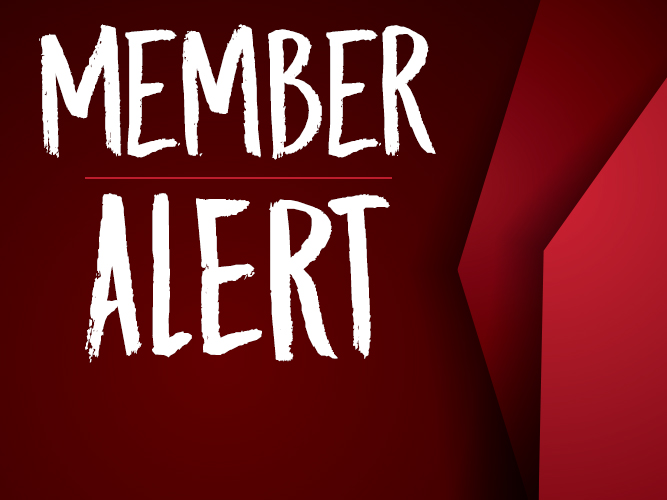News Archive
Posted 11/17/2020

North Dakota Stockmen’s Association Member Update: Nov. 17, 2020
The North Dakota Stockmen’s Association (NDSA) is proud to be the voice of the state’s beef cattle producers. Here are a few things you should know:
Cutrer provides valuable marketing tips in Seedstock Council webinar
Ranch House Designs CEO Rachel Cutrer offered an array of marketing tips as the guest speaker during the NDSA Seedstock Council’s Virtual Marketing Seminar last Thursday. Missed the live program? You can view Cutrer’s “Marketing Seedstock in 2020-21: Navigating the Pandemic and Leveraging Modern-Day Tools” program by clicking here.
The Seedstock Council is comprised of representatives of the state’s breed associations. Representatives include the following: Travis Bruner and Evan Farnsworth (alternate), Angus; Bailey March, Gelbvieh; Logan Behm and Shane Giedd (alternate), Hereford; Austin and Leah Hager, Limousin; Karissa Daws and Jodi Schriefer (alternate), Red Angus; Derek Jungels, Shorthorn; Doug Bichler and Tim Clark (alternate), Simmental; and Jon DeKrey, commercial. The Seedstock Council will next meet Jan. 14 for a reorganizational and planning meeting.
Legislative Management hears interim reports
Sen. Robert Erbele delivered the final report of the Interim Natural Resources Committee to Legislative Management last week. To listen to the report and learn more about the findings from the land access study the committee oversaw, click here. Erbele’s part begins at 11:41:52.
North Dakota General Election results
Nearly 350,000 North Dakotans (62.65 percent) voted in the 2020 General Election. The full results can be found on the North Dakota Secretary of State’s website. To view the results, click here.
Bernhardt issues secretarial order that adds requirements for purchases with the Land and Water Conservation Fund
The last two weeks have contained several deadlines and updates to the use of the Land and Water Conservation Fund (LWCF), including a secretarial order and acquisition priorities released by the Trump Administration. Here is a brief background on LWCF and some supplemental materials:
Background
In August 2020, President Donald Trump signed into law the Great American Outdoors (GAO) Act. The GAO Act does two things: (1) Provides a pot of money to bail out federal lands management agencies that already had significant deferred maintenance backlogs, and (2) Made the funding for the Land and Water Conservation Fund mandatory. Funding for LWCF had already been made permanent by Congress (rather than having a “sunset” ending date on the funding authorization), but making the funding mandatory took the actual funding allocation out of Congress’ hands.
The NDSA opposed the GAO Act. Nevertheless, it became law. The livestock community, led by the Public Lands Council and the National Cattlemen’s Beef Association, has been working to protect against any negative impacts from the bill. The strategy is threefold: 1) Calling for Congressional oversight (Congressional committees can still hold hearings on the LWCF program, even if they are not actively appropriating dollars or setting acquisition priorities); 2) Weighing in on proposed acquisitions with the U.S. Forest Service and the U.S. Department of the Interior; and 3) Working with Congress and future administrations to limit the way the federal side of LWCF can be used.
Secretarial order
The most recent news is in that third way. Last Friday, U.S. Interior Secretary David Bernhardt issued Secretarial Order 3388, which does a few things, but, most importantly, requires that any Interior land acquisition must have a written expression of support from both the governor of the affected area and the local county or county government equivalent.
Priority lists
Congress did include an oversight provision in the GAO Act by requiring the Interior and the Forest Service to notify Congress during the appropriations process of the projects they plan to fund for that fiscal year. The U.S. Department of Agriculture, on behalf of the Forest Service, has released its project list here. (North Dakota is not included on this list.) The Department of the Interior initially missed the deadline to submit to Congress, but has issued a preliminary list in a letter to Congressional appropriators instead. (North Dakota does not appear on this list either.)
What is your favorite Christmas memory?
Ho, ho, ho, the holidays are just around the corner! Help your peers get in the Christmas spirit by sharing what your favorite Christmas memory is. Share your special Christmas story with us in 250 words or less by Nov. 23 for a chance at a Texas Roadhouse gift card and to be published in the upcoming North Dakota Stockman. E-mail stories to Elizabeth Neshem, magazine editor, at eneshem@ndstockmen.org.
Risk Management Agency extends comment deadline on proposed PRF changes
The Risk Management Agency (RMA) is extending its comment period on the Pasture, Rangeland and Forage Rainfall Index Crop Insurance Program (PRF) Indexing and Rating Methodology until Dec. 21. RMA will accept comments regarding the results of this contracted study and alternative recommendations until the close of business that day. All comments received will be considered and evaluated prior to making any changes for the 2022 crop year.
The recommendations include 16 recommendations – seven producer recommendations and nine contractor recommendations. Several could have detrimental effects to the program, the NDSA believes.
The producer recommendations include the following:
1) Block out winter intervals;
2) Lengthen the intervals;
3) Factoring in livestock numbers;
4) Weighted County Base Values (CBV) by intervals;
5) Move the PRF sales closing date to Dec. 1;
6) Utilize smaller grid sizes; and
7) Limit grid selection to the physical location of acreage.
Full recommendations and the PRF Contractors Report can be viewed here. Comments can be sent to RMA at rma.kcviri@usda.gov or Director, Product Administration and Standards Division, Risk Management Agency, U.S. Department of Agriculture, PO Box 419205, Kansas City, MO 64133-6205.
